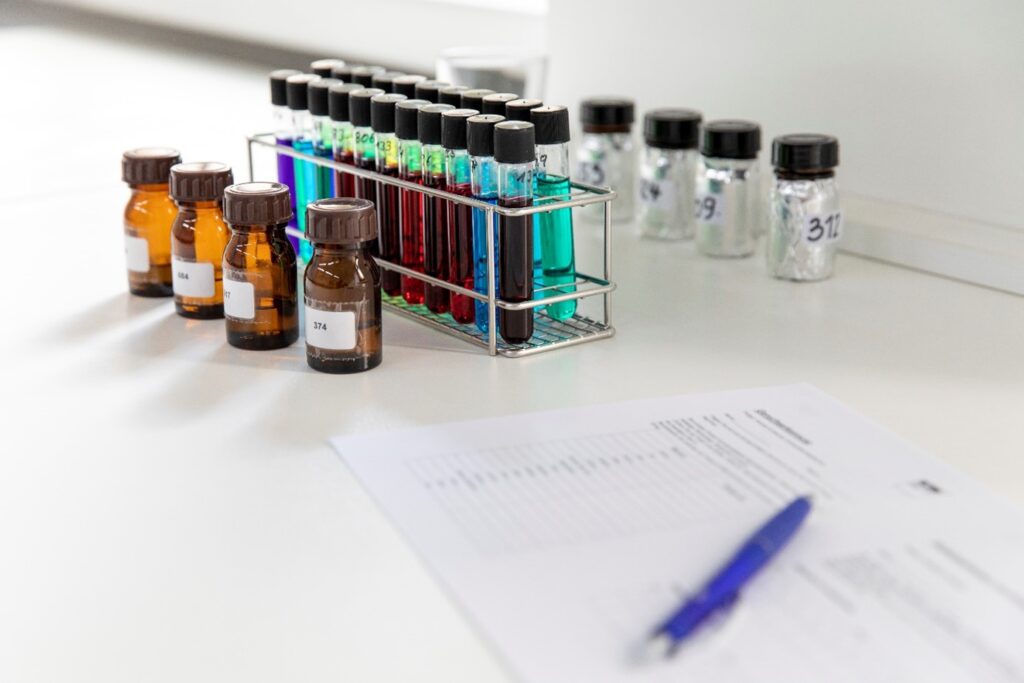Yvonne Spethmann from our partner KIN explains the important differences between a technological sensor and the use of a trained sensory panel to ensure the quality of food.
Who decides whether meat is still suitable for processing into sausage products, direct sale to the consumer, or whether it is already spoilt? Is a sour odour typical of meat products, or is it already an indication of spoilage?
Legal regulations require the food trade to regularly analyse food chemically and microbiologically to protect consumers from deception and pathogens. But what can sensory testing methods achieve?
The term “sensor technology” refers to both technical sensors and human senses. In a technical context, for example, sensors can recognise certain substances that indicate deviations from the norm. Aromatic compounds that cause unpleasant odours can be produced when food ingredients break down. The chemical molecules can be “captured” with programmed sensors and determined qualitatively and, if necessary, quantitatively using customised analysis methods. However, this method can only analyse the substances specifically calibrated in the measuring device. If another degradation product is produced that the sensor cannot measure, this could lead to the food being released in the production process due to insufficient information unless other safety measures are taken to ensure food safety.
The human senses are still indispensable for testing and assessing sensory marketability and shelf life as part of quality control. Sensory impressions of appearance, odour, taste and consistency, combined with positive and negative experiences when eating food, form the basis for deciding whether a product is still fit for consumption. A certain basic requirement for the sense of taste is inherited through genes. In addition, the sense of taste develops throughout a lifetime through familiarisation with the cultural and social environment, among other things. The nose plays a vital role in this context and serves as a warning system against the consumption of spoiled food. The ability to distinguish and name different odour impressions can be trained by recognising memorised odour patterns.
People who are sensitised to certain sensations of smell and taste can be used to assess the marketability of food.
Both at KIN and similar institutions, we train the senses of a sensory panel and test the ability of test persons to recognise certain sensory impressions. The first step in training the senses is determining whether the test person is physiologically capable of recognising certain deviations and off-flavours due to their genetic predisposition. This can be determined using reference substances, standardised samples or existing products with off-flavours. However, some anomalies must be detected before a subject is used for specific sensory questions. Testers with a red-green weakness may not be able to recognise greenish changes in reddish meat products, which could indicate a product defect. There are also people, for example, who are particularly sensitive to bitter substances and those who are not. Bitter flavourings can be produced, for instance, during the breakdown of proteins and thus during spoilage and would be recognised by people sensitive to bitterness.
As human sensory organs are also subject to change, the recognition and discrimination skills of the sensory testers involved in a sensory evaluation must be regularly checked and maintained through training.
Test of a newly developed sensor
The Food Institute KIN e.V. is working together with partners from the University of Southern Denmark in Sonderburg, AmiNIC Aps, Lübeck University of Applied Sciences, Flensburg University of Applied Sciences and the Fraunhofer Institute ISIT in the Interreg project “Precise”. The KIN is investigating the functionality of a gas sensor that measures cadaverine, which is produced during the decomposition of raw meat. The sensor is to be used at meat counters or in meat-processing companies. For this purpose, a group of testers has been set up at KIN to evaluate this spoilage odour. The testers classify the sensory impressions by evaluating the odour deviations and comparing them with the results of the microbiological and chemical tests and the measurements of the newly developed sensor. A statement can then be made on whether the sensor’s measurement results are reliable and the KIN contributes to calibrating the sensor’s measurement values

